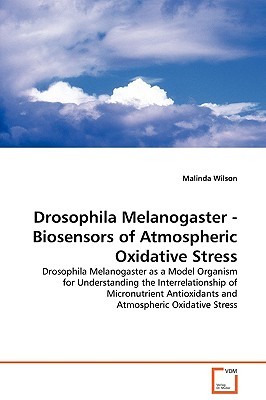
- We will send in 10–14 business days.
- Author: Malinda Wilson
- Publisher: VDM Verlag
- ISBN-10: 3639130626
- ISBN-13: 9783639130621
- Format: 15.2 x 22.9 x 0.7 cm, softcover
- Language: English
- SAVE -10% with code: EXTRA
Drosophila Melanogaster - Biosensors of Atmospheric Oxidative Stress (e-book) (used book) | bookbook.eu
Reviews
Description
Studies of Drosophila melanogaster have led to molecular insights concerning biomolecular mechanisms of biology and disease including development, differentiation, cancer and aging. Wild-type Drosophila, unlike vertebrate mammals, selectively retains gamma-tocopherol over alpha- tocopherol. Urate-deficient Drosophila compared to wild-type had similar levels of glutathione but only 50% of the ascorbate levels. Dietary supplementation with ascorbate dramatically increased its level while chemically-defined diets led to rapid depletion of ascorbate in both strains. It is concluded that Drosophila do not synthesize ascorbate, and in this respect are similar to humans. Wild-type and urate-deficient Drosophila were continuously exposed to ozone. Exposure of Drosophila to 2 ppm ozone/24hrs/day unmasked a marked sensitivity phenotype of urate-deficient Drosophila. Studies revealed that ascorbate supplementation decreased ozone-induced toxicity in Drosophila. Collectively, these data reveal the usefulness of Drosophila as a model organism for studying micronutrient antioxidants and their interrelationship with ozone-induced toxicity.
EXTRA 10 % discount with code: EXTRA
The promotion ends in 17d.08:46:59
The discount code is valid when purchasing from 10 €. Discounts do not stack.
- Author: Malinda Wilson
- Publisher: VDM Verlag
- ISBN-10: 3639130626
- ISBN-13: 9783639130621
- Format: 15.2 x 22.9 x 0.7 cm, softcover
- Language: English English
Studies of Drosophila melanogaster have led to molecular insights concerning biomolecular mechanisms of biology and disease including development, differentiation, cancer and aging. Wild-type Drosophila, unlike vertebrate mammals, selectively retains gamma-tocopherol over alpha- tocopherol. Urate-deficient Drosophila compared to wild-type had similar levels of glutathione but only 50% of the ascorbate levels. Dietary supplementation with ascorbate dramatically increased its level while chemically-defined diets led to rapid depletion of ascorbate in both strains. It is concluded that Drosophila do not synthesize ascorbate, and in this respect are similar to humans. Wild-type and urate-deficient Drosophila were continuously exposed to ozone. Exposure of Drosophila to 2 ppm ozone/24hrs/day unmasked a marked sensitivity phenotype of urate-deficient Drosophila. Studies revealed that ascorbate supplementation decreased ozone-induced toxicity in Drosophila. Collectively, these data reveal the usefulness of Drosophila as a model organism for studying micronutrient antioxidants and their interrelationship with ozone-induced toxicity.


Reviews